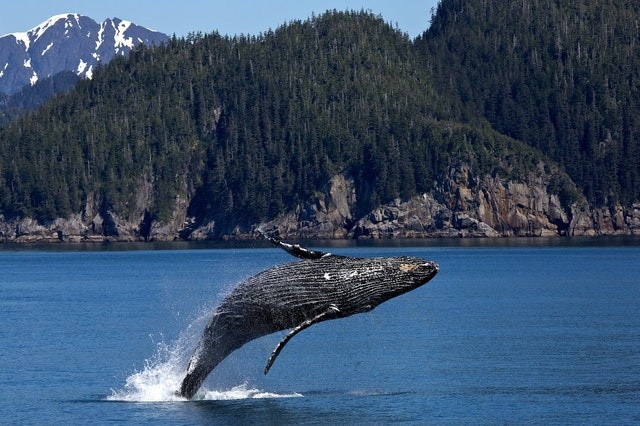About one thousand fin whales, one of the largest animals in the world, were spotted swimming in the same waters where whaling nearly wiped them off a century ago.
This large number of whales was gathered five miles wide between the South Orkney Islands and Antarctic Peninsula. One whale is impressive, but picture about 1,000 of them, with spouts as tall as pine trees, blowing plosively and exhaling steam as they do so in the frigid air.
Whales off the coast of Antarctica glide through the waves with the precision of a well-rehearsed ballet.

Fin Whales Are Back From Near Extinction
Many biologists were taken aback by the sight and were jealous of Conor Ryan's experience aboard the National Geographic Endurance arctic cruise ship.
This may be one of the greatest aggregations of fin whales ever photographed, according to Ryan, an expert zoologist and photographer.
According to Ryan, four large krill fishing vessels were operating in the same area roughly 15 miles north of Coronation Island. The presence of the ships reveals the true purpose of the gathering. The whales were devouring tons of shrimp on a massive scale.
Seeing a fin whale underwater is like seeing a slim, sinuous monster that takes forever to swim by.
They're baleen whales, like the blue, humpback, and minke, and can be identified by the keratinous plates that serve as food filters instead of teeth. Like other whales, such as sperm whales, they are not considered to be sociable creatures.
Death of Fin Whales
So, can one say that this is good news? As many as two million whales have been slaughtered here over the last century. There are still reverberations of that cull in the culture of fin whales, given that they can live up to 140 years.
Since fin whales changed their behavior to avoid being hunted by whalers in the 19th century, humans may assume that they are not "social" animals.
To keep one step ahead of their prey, scientists believe that baleen whales have also learned to avoid large groupings, according to The Guardian. Perhaps they're only just making their way back to their old haunts to feed.
Ryan and his best friend, Peter Wilson, wrote their first peer-reviewed scientific study about killer whales in 2001 when they were just 14 years old. He'll have to write another paper when he gets back from this vacation.
No other incident like this has occurred in Ryan's 20 years at sea. "Words fail me," he says. "I have seen maybe 100 fins here before in previous years. Thousands of chinstrap penguins, petrels, and albatrosses, too ... It was unusually calm weather," he adds, "and unusually good visibility."

Hope For Recovery
If Ryan thinks he's lucky, then everyone should, too. Whales continue to be under attack, primarily by humans.
Humans should also remember that if the new police and crime bill becomes law, the protests that saved the whales in the 1970s and 1980s will be outlawed.
1,000 fin whales can't help but brighten scientists' spirits in a world beset by tragedy and challenges to democracy.
Perhaps they can even persuade scientists that "all of this" is still possible for humans as another species of (allegedly) intelligent mammal. As long as humans stand united and raise a couple of their own protest spouts.
Related Article : Is the Population of Endangered Fin Whales Finally Recovering?
For more news, updates about whales and similar topics don't forget to follow Nature World News!
© 2026 NatureWorldNews.com All rights reserved. Do not reproduce without permission.





